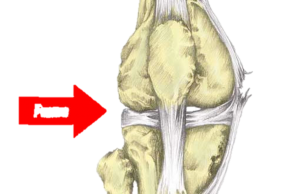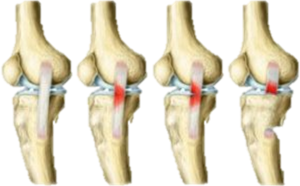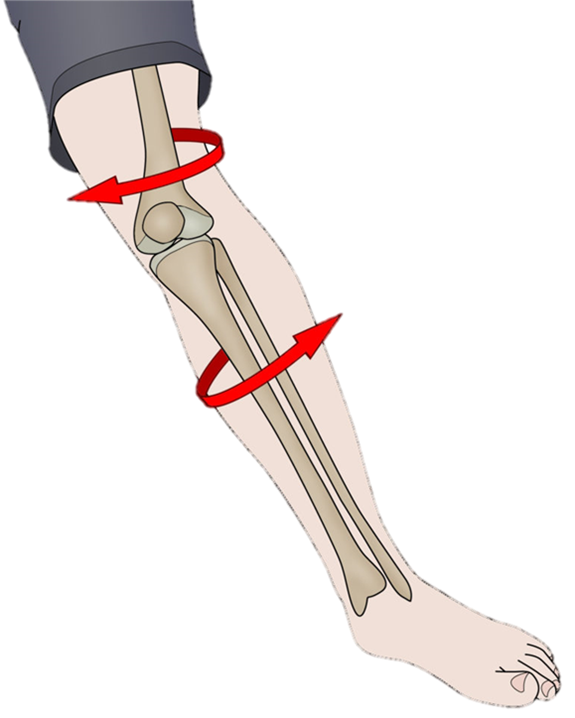MCL sprains usually occur suddenly but can develop gradually over time.Sudden onset/acute injuries
Medial ligament injuries are common in contact sports such as football, rugby, and martial arts but they can also occur in activities of daily living as a result of falls that include a twisting action of the knee joint.
Causes
Injury to the MCL often occurs after an impact to the outside of the knee when the knee is slightly bent.
The ligament on the inside of the knee becomes stretched and if the force is great enough, some or even all of the fibres will tear. The deep part of the ligament is prone to becoming damaged first which may lead to a medial cartilage meniscus injury.
Twisting the knee can also cause a medial ligament sprain as well as the possibility of an ACL tear.
If the foot is planted and the player tries to turn quickly this can also lead to stressing the joint causing the inside of the joint to open and tear the ligament.
Repetitive sideways forces on the knee (known as valgus forces) can gradually over time lead to an MCL sprain.

Anatomy
The medial collateral ligament (MCL) is located on the inner aspect, or part, of your knee, but it’s outside the joint itself. Ligaments hold bones together and add stability and strength to a joint.The MCL connects the top of the tibia, or shinbone, to the bottom of the femur, or thighbone.

MCL injuries can be grades 1, 2, or 3:
A grade 1 MCL injury is the least severe. It means that your ligament has been stretched but not torn.
A grade 2 MCL injury means that your ligament has been partially torn. This usually causes some instability in your knee joint.
A grade 3 MCL injury is the most severe type of ligament injury. It occurs when your ligament has been completely torn. Joint instability is common in a grade 3 MCL sprain.
Treatment
Treatment of a MCL sprain can be split into a 5 phase programme
Phase 1 is to protect the injured ligament to allow it to repair to its optimal strength and as close to its original length as possible.
Phase 2 is to regain normal range of movement and increase the ability of your knee to take load in a controlled environment.
Phase 3 is to prepare your ligament to withstand heavier loads throughout full range of movement. You will progress to dynamic loading such as hopping, jumping, and running up to 75% pace.
Phase 4 is to prepare and return you to your sport/activity safely, with the ability to perform at your best with confidence
Phase 5 is for when you are back into normal sports training to help prevent your injury recurring.

